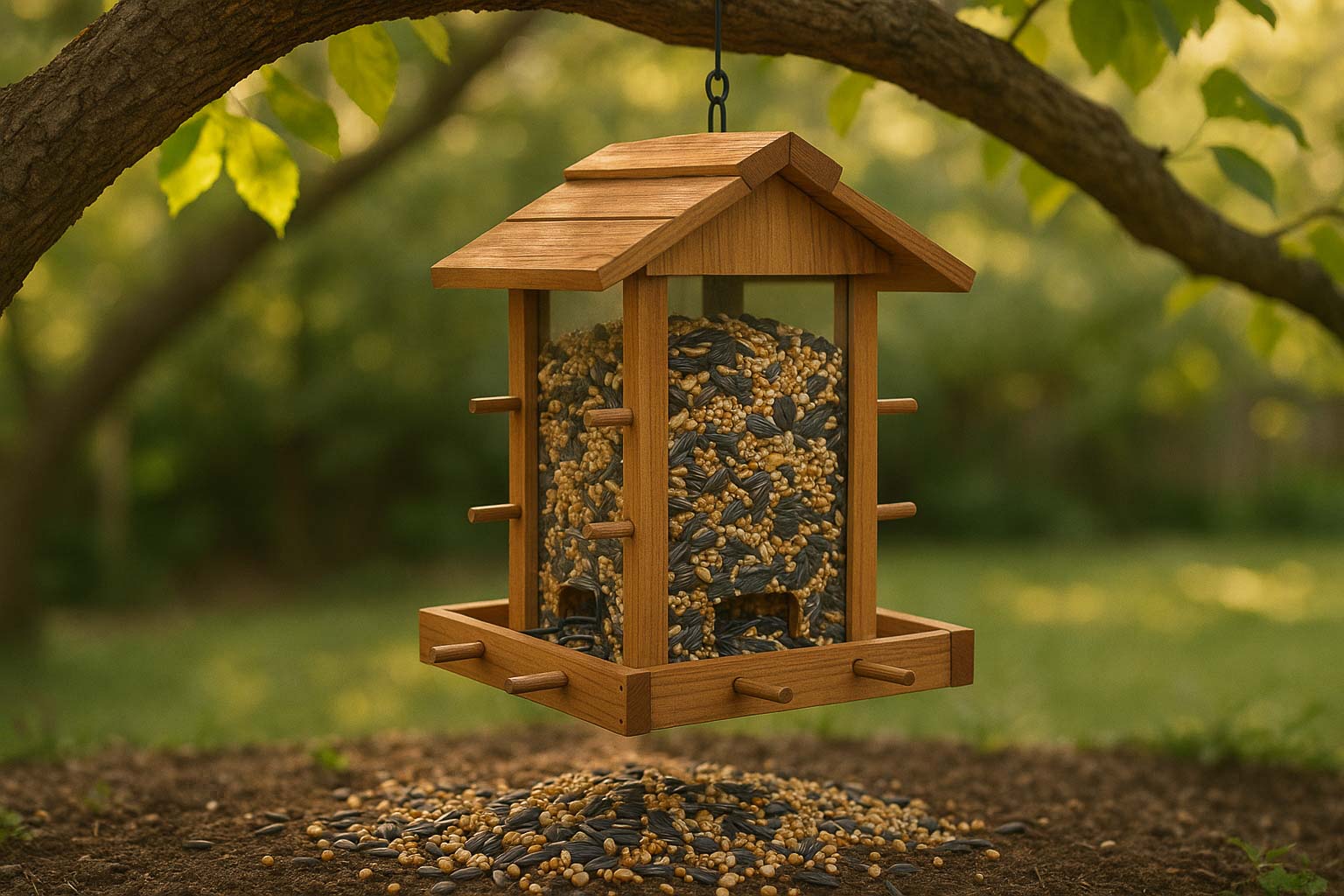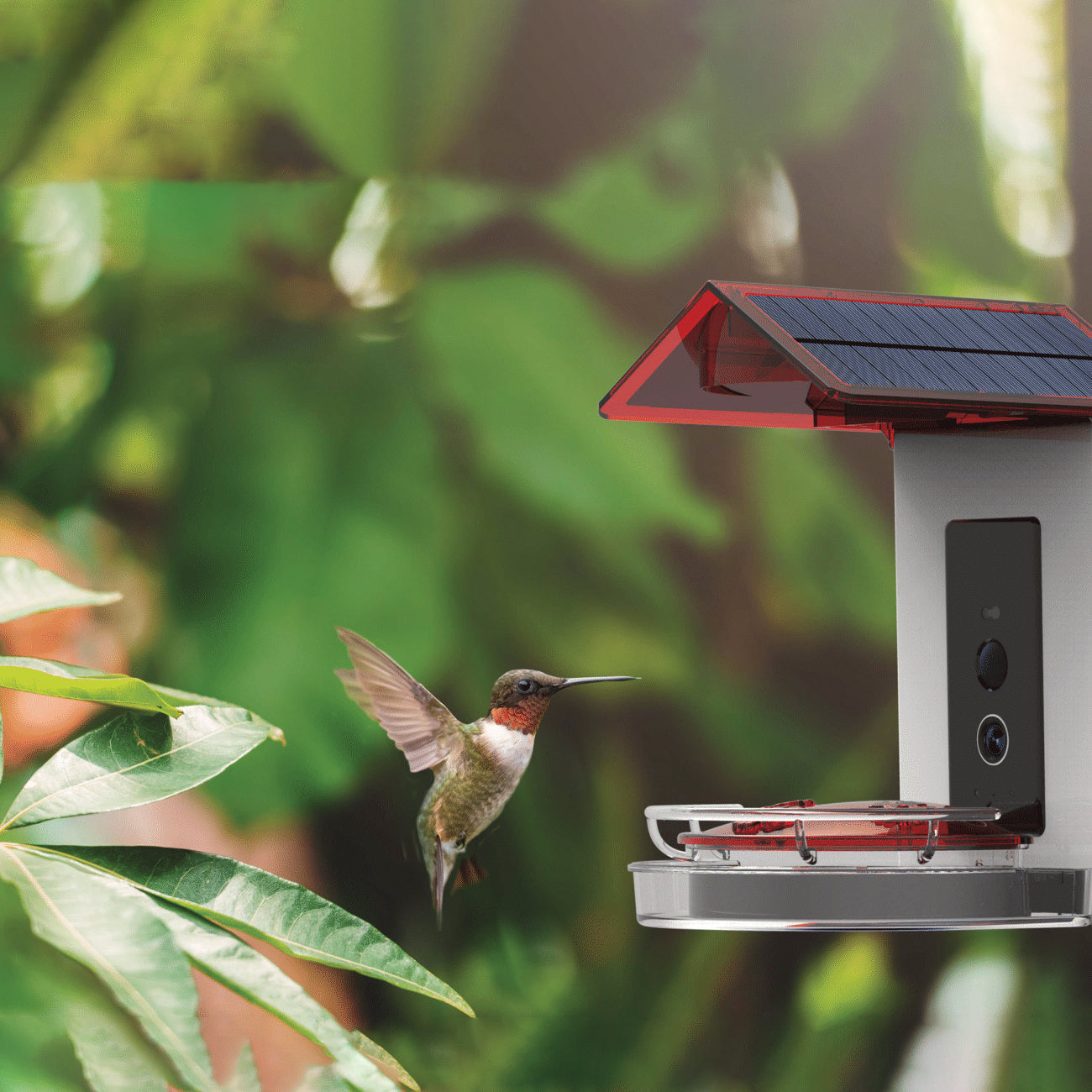When it comes to backyard birdwatching, the food you put in your feeder is only half the story. Where you place your feeder can make the difference between an empty perch and a lively gathering of colorful visitors. At Trail Optics, we know that positioning your feeder thoughtfully not only brings more birds but also keeps them safe and returning day after day.
Why Placement Matters
Birds are naturally cautious creatures. They’ll visit your yard only if they feel secure, have a clear escape route, and can easily spot your feeder. By choosing the right location, you increase your chances of attracting a variety of species while giving them the comfort they need to stick around.

Tips for the Perfect Feeder Location
Near Natural Shelter
- Best practice: Place feeders 5–10 feet from shrubs or trees.
- Why it works: Birds feel safer with nearby cover where they can quickly retreat if startled.
- Bonus tip: Dense foliage also attracts insects, another food source for many birds.
Safe from Predators
- Cats: Keep feeders at least 10 feet from areas where cats can hide and pounce.
- Squirrels: Use baffles or poles with smooth surfaces to make it harder for them to climb.
- Height: Aim for 5–6 feet off the ground — high enough to deter predators but still accessible.
Visibility is Key
- For birds: Birds are more likely to visit if they can see your feeder from the air. Open spaces with a clear line of sight make feeders easier to find.
- For you: Position your feeder where you can enjoy the view — near a window, patio, or garden seating area.
Sunlight and Shade
- Morning sun: A spot with early sunlight warms the feeder, encouraging birds to feed in the morning.
- Partial shade: Keeps seed from spoiling too quickly and helps prevent mold during hot weather.

Creating a Safe, Secure Feeding Station
- Multiple feeders: Spread them out to reduce competition and crowding.
- Avoid windows: Place feeders either within 3 feet of a window (so birds can’t gain speed to collide) or more than 10 feet away.
- Steady placement: Make sure feeders don’t swing excessively in the wind — movement can make birds nervous.
Making Your Feeder Easy for Birds
As covered in this article, accessibility matters as much as safety. Ensure that:
- Perches are clear of obstructions.
- Feeders are filled consistently, so birds learn to rely on them.
- The ground beneath is tidy — fallen seed can attract unwanted pests.
Building a Bird-Friendly Haven
Choosing the perfect spot for your feeder takes observation and a little trial and error. Pay attention to where birds perch in your yard, where they seem to feel safest, and adjust accordingly. Over time, you’ll find the sweet spot where your feeder becomes a trusted stop for everything from finches and chickadees to cardinals and woodpeckers.
At Trail Optics, our smart bird feeders make it easier than ever to enjoy these moments. By pairing smart design with thoughtful placement, you’ll create a thriving birdwatching oasis right in your backyard.



Leave a comment
This site is protected by hCaptcha and the hCaptcha Privacy Policy and Terms of Service apply.